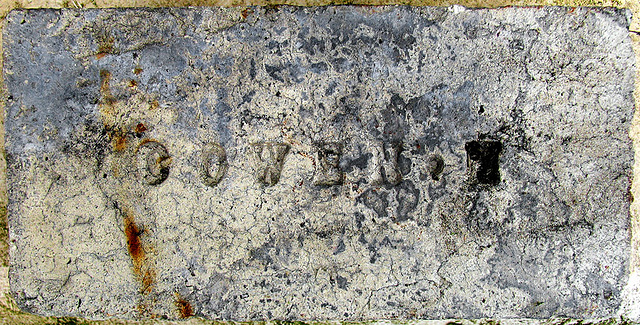Sunset on Sandaoling steam
Crossing the reservoir
Portobello kilns
Beware the ropeway
Beryl
Sandaoling in the morning
Pear
Hem Heath Power Station
Transformers
Bewdley by ballast hopper
Heading for the pass
Strathclyde Grain distillery
Castles in the air
East Parade Chambers, Leeds
The controller
The arrival
Castles in the air 2
County Playhouse
39 Commercial St, Newport
Postal abandonment
Isibutu in the fields
Glasgow Central rush hour
Leeds Liberal Club
175 Fifth Avenue
Town Head pye kiln
Rugeley Power Station
Kostolac
Finch Foundry
Sunrise at the summit
Waytown limekilns
Steaming on the edge
Greatham Works
HMS Daring
Managing cash in society
Sinclair's Clock
Haddock Low limekilns
Topley Pike
Rugeley again
Sliding Bridge
Inside the Hoffmann Kiln
Mill engine
Bellmanpark limekilns
WD passing
Cement works rail
Rugeley Power Station
See also...
Keywords
Authorizations, license
-
Visible by: Everyone -
All rights reserved
-
606 visits
Cowen's brickworks (Low yard), Blaydon Burn


I found this firebrick marked COWEN M in a small draw limekiln just below Alston Moor in Cumbria. A little research showed it to be a product of Cowen's Low Yard at Blaydon Burn.
Brickworks were established here in 18th century and fireclay is thought to have been mined here even earlier. About 1819 Joseph Cowen, the first Chairman of the River Tyne Improvement Commission, took over the Blaydon Burn Pit and Works. Upon his death in 1874 his sons Joseph Cowen and John Anthony Cowen took over. The property included two sets of firebrick and retort making works, each with drying and kilning accomodation and steam-driven machinery. The lower works abutted the North Eastern Railway and River Tyne, and a system of sidings and a long stretch of wharfage provided facilities for transport by rail or boat. The fire brick works consisted of one large building with three smaller, but nevertheless substantial, buildings in the 1850s. By the 1890s a number of others had been added, but a major redevelopment saw the building of a huge single structure which covered most of the site of the early buildings. Some further expansion took place in the inter-war period. Cowen's had brickworks at either end of the Blaydon Burn valley: this was Joseph Cowen's Number 2 Firebrick Works. Both closed in relatively recent times, the upper brick works closing before the lower works which were latterly owned by the National Coal Board. Little remains of the lower works today.
Brickworks were established here in 18th century and fireclay is thought to have been mined here even earlier. About 1819 Joseph Cowen, the first Chairman of the River Tyne Improvement Commission, took over the Blaydon Burn Pit and Works. Upon his death in 1874 his sons Joseph Cowen and John Anthony Cowen took over. The property included two sets of firebrick and retort making works, each with drying and kilning accomodation and steam-driven machinery. The lower works abutted the North Eastern Railway and River Tyne, and a system of sidings and a long stretch of wharfage provided facilities for transport by rail or boat. The fire brick works consisted of one large building with three smaller, but nevertheless substantial, buildings in the 1850s. By the 1890s a number of others had been added, but a major redevelopment saw the building of a huge single structure which covered most of the site of the early buildings. Some further expansion took place in the inter-war period. Cowen's had brickworks at either end of the Blaydon Burn valley: this was Joseph Cowen's Number 2 Firebrick Works. Both closed in relatively recent times, the upper brick works closing before the lower works which were latterly owned by the National Coal Board. Little remains of the lower works today.
- Keyboard shortcuts:
Jump to top
RSS feed- Latest comments - Subscribe to the comment feeds of this photo
- ipernity © 2007-2024
- Help & Contact
|
Club news
|
About ipernity
|
History |
ipernity Club & Prices |
Guide of good conduct
Donate | Group guidelines | Privacy policy | Terms of use | Statutes | In memoria -
Facebook
Twitter

Sign-in to write a comment.